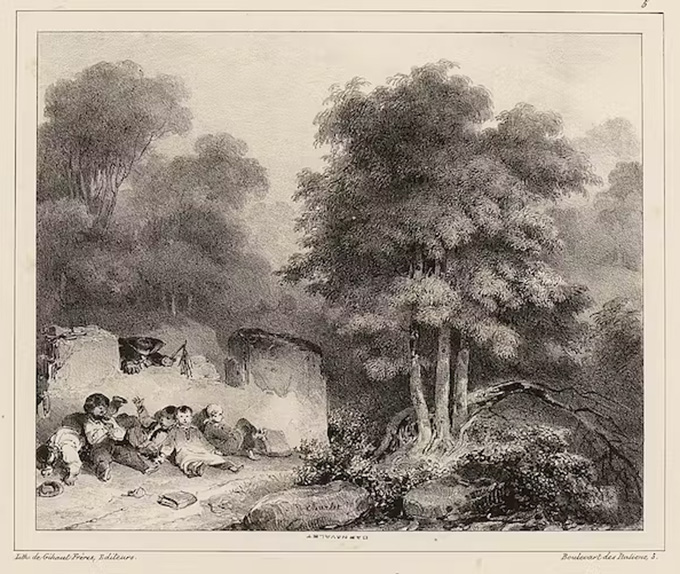
The French school is reputed, at least in a significant part of public and political representations, to be locked in a multifaceted crisis. Thanks to these findings, attention has focused on “academic failure”, “dropouts” and the average results of French students in international rankings (PISA).
This context of increased academic competition translates, in the eyes of several observers, into an ever more pressing injunction to produce high-performance students and an education system . Such a development seems paradoxical for an institution supposed to be the basis of the republican model and its values.
Indeed, in France, as in many other countries, it was in the 1960s and 1970s – when the first effects of school massification policies were seen – that the themes of academic failure and the crisis are put at the forefront of the educational, media and political scene. What does this historic change mean?
Before the 1950s, frequent but invisible academic failure
The notion of academic failure is relatively recent . The expression actually appeared in the 1960s. Does this mean that it was absent from school experiences before 1945? Certainly not. In reality, the question did not arise exactly in these terms before the middle of the 20th century , but refers to different situations in an education system which remains organized according to a division and segregation into two “orders” (primary and secondary ) based on social belonging.
In secondary education (made up of state high schools and municipal colleges which have their own elementary classes), the failures of certain children from well-off backgrounds are considered “paradoxical” in a school population normally intended for long studies , as Viviane Isambert-Jamati showed in 1985, and not short schooling, characteristic of young people from working-class backgrounds.
Indeed, the “people’s school”, free (1881), only allows students with a good academic level to obtain the famous certificate of studies (a minority of students: less than a third at the end of the 19th century ) and to continue their studies beyond compulsory schooling, in higher primary education establishments. The others, that is to say most children from worker and peasant backgrounds, join the factory or the farm at the age of 13.

These exits from the school system are, however, not perceived as a failure in the working classes: they did not pose a problem, they were legitimate educationally, socially, politically and culturally, summarizes Jean Houssaye . At most they could be experienced as disappointed ambitions.
On the other hand, the republican school model generalizes the practice of repeating a year in primary education. Thus, in 1888, only 30% of students completed the planned course without repeating a year! Its use, first massive then attenuated, results in an unequal distribution of numbers and classes where the age of the students varies greatly.
A significant proportion of these students in difficulty practice “truant school”. Absenteeism remains at high levels. For example, it can reach 20% in elementary classes in working-class neighborhoods in Paris and its suburbs . In addition, some children aged 6 to 13 are not enrolled in any school. But the fate of these children is of little interest…
Childhood psychology takes up the subject
The situation of “late” students, on the other hand, concerns political, educational and medical circles, but belatedly. To designate them, a multitude of categories with vague outlines are used: “retarded”, “dunces”, “backward”, “stupid”, “idiots”, “morons”, “maladjusted”, “deficient”… Medical research attempts to explain the causes and give rise to the publication of multiple reports .
At the turn of the century, the psychology of emerging childhood also sought to evaluate, measure these delays and imagine structures capable of taking care of “abnormal children” according to the expression of the moment, which also included the cases of students presenting a disability
Alfred Binet and Théodore Simon have thus developed a tool making it possible to identify children likely to encounter the greatest academic difficulties: it is a psychometric scale (called intelligence) which aims to diagnose “backwardness”. » by comparing the child’s performance to that of his or her age group (later popularized under the acronym “QI”). They were also members of the interministerial commission (1904-1905) responsible for studying the application of compulsory education to abnormal children.
This obligation led to the law of April 15, 1909 creating schools and improvement classes for so-called backward children, which were the foreshadowing of specialized education .
In the 1960s, academic failure became a social and political problem
Why do some children generally succeed less than others at school? In the 1960s, French sociology of education answered this question by showing the role of school and school culture in the reproduction of the model of socially advantaged categories and therefore of social inequalities. As historian Jean-François Condette recalls :
“academic failure has long been seen only in individualistic and clinical terms, as the failure of a child in school for personal reasons [but] the question becomes, from the 1960s, for certain psychologists and sociologists and a certain number of national education executives, a social problem concerning the poor functioning of the school system. »
It was then in full transformation: the reforms of 1959 and 1963 extended compulsory education to 16 years and laid the foundations of the single secondary school (1975), while public discourse insisted on the essential role of schooling in economic development. and future technology.
The emergence of the notion of academic failure is in fact concomitant with the growth in numbers in the first cycle of secondary education (massification) and its opening to a sociologically wider public (democratization), at a time when statistics provide a reading grid for these processes.
From 1957, the statistical service of the Ministry of National Education took an interest, for example, in the social background of middle school students (using the INSEE CSP classification constructed for the 1954 census) and cross-referenced this indicator with other variables: educational level and age in particular. Academic delay therefore becomes measurable.
It is then that academic failure is born as a public problem, from the moment when entering the 6th grade and continuing studies at college become the norm. The entry on the scene of sociologists (like Alain Girard ) makes it possible to highlight the influence of the social environment on academic failure (or rather success which now becomes the aim of schooling) but also the fact that excellent students are not pursuing studies.
The weight of territorial inequalities is then largely underestimated although ministerial studies reveal departmental variations in access to extended studies and departments that are “backward” or academically “underdeveloped”.
The notion of academic failure then extends to other levels of the school system, as high schools become more widespread in the 1980s and then in mass higher education in the 1990s-2000s in the context of the rise of unemployment and fear of social exclusion. Dropping out of school mid-course and leaving the school system without a diploma then become a public and institutional problem .
Towards the implementation of public policies
It has also become a category of public action according to Pierre-Yves Bernard : the educational institution takes care, through various policies (including priority education) and multiple devices or structures (such as micro-high schools) of young people in a situation of dropping out of school , because in the medium term it raises the question of their professional and social integration.
If failure and then dropping out of school reveal the importance assumed by diplomas and qualifications, the first consequence of massification was a certain devaluation of diplomas to the extent that the benefit derived from obtaining them diminishes. This is the case for the baccalaureate in particular.
Secondly, democratization has the perverse effect of displacing inequalities and educational failures instead of eliminating them, as the historian Antoine Prost has shown . Thus, in the 1960s, for “bad” students who previously remained in the end of primary education classes (after the middle school), 6th grade transition classes were created, then 4th grade practical classes entrusted to specialized teachers. After the establishment of the single college, the pre-professional level classes (CPPN) replace the practical classes and welcome students who have failed at school and are destined for apprenticeship or vocational education in socially devalued sectors.
The story of these students failing at school is therefore not only the story of those who drop out of school. It is also that of the school which marginalizes certain types of students: the “dropouts” (SEGPA), “refused” from school or “defeated in school competition” .
Thus, academic failure varies greatly depending on the historical moment in which it is considered . The wide diffusion of the concept is less a symptom of a school crisis than a reflection of the growing expectations of the school towards the students and of society towards its school (including the purposes have changed). Ultimately, it is due to an improbable cause and effect link: the more the level of education and qualifications of a population increases, the more academic failure increases…
Author Bio: Julien Cahon is a University Professor at the University of Picardie Jules Verne (UPJV)